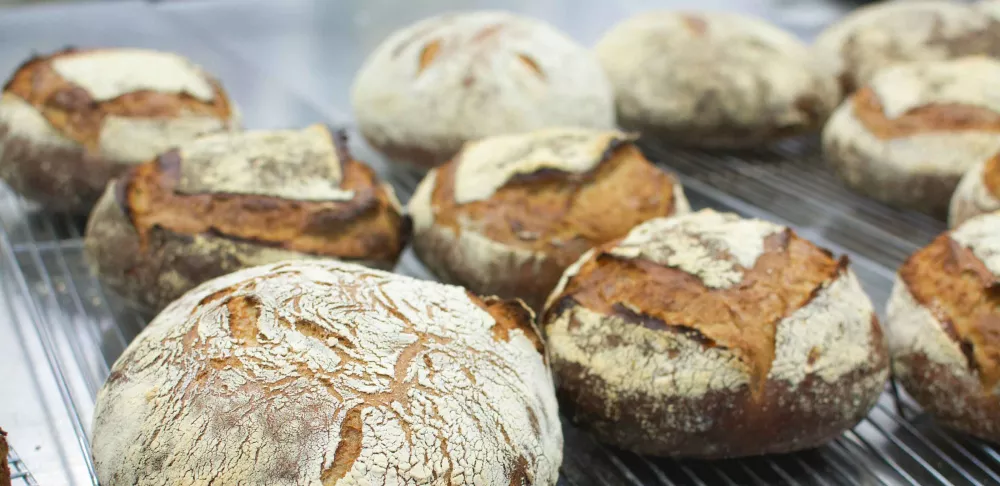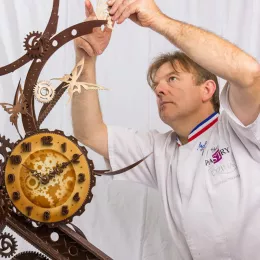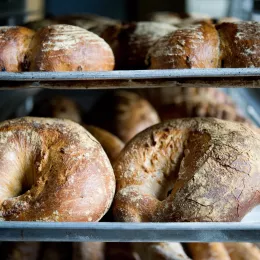Anything worth having is worth waiting for, and that’s especially true with bread. “Bread baking, especially when using wild yeast, is a faith-based enterprise,” says Chef Sim Cass, dean of bread baking at the Institute of Culinary Education. “You need to believe that the bread will rise. Then you have to have the patience required to get your perfect loaf.”
A patient mindset is just one thing students will learn during Chef Sim’s 200-hour Techniques of Artisan Bread Baking course at ICE.
As the founding baker of Balthazar Bakery, London-born Chef Sim helped introduce New Yorkers to naturally fermented, European-style breads, earning him the nickname “the Prince of Darkness” for his deeply toasted, crusty loaves.
“The holy grail of bread baking is to make bread with natural yeast,” says Chef Sim. “This dates back thousands and thousands of years. It’s basically using natural yeast that we get out of the air and growing a starter or a natural ferment to make our bread. That’s the base when you make sourdoughs and your nice rye breads. About half of the breads at Balthazar and Bread Ahead in London [where Chef Sim recently worked] are made with natural ferments. It’s the oldest way, but it is now the way of the best bakeries in the world. We’re all baking with natural ferment.”
Working with natural yeast, however, makes some aspiring bakers nervous.
“People are very intimidated by bread for some reason,” says Cass. “They tend to overthink it. It is difficult because it’s a series of methods to obtain one end product. It’s not like cooking. You have to make it over several days. It’s a series of small actions that end up having a good result.”
During his career working in restaurants and bakeries around the world, Chef Sim has come to realize that the relationship between bread and people is really the same everywhere. The only difference is the flour.
“Different places have a hard time getting certain flours, so that’s all that changes,” says Chef Sim. “If you work with bakers in Japan or bakers in Australia or bakers anywhere, they’re all of the same head, which is cool.”
The mistakes people make are also universal.
“The most common mistake that I see is people tend to make bread too warm,” says Chef Sim. “Use cold water. You need to keep the temperature of the dough cool because then it is much more manageable and the bread takes longer to make. More time equals more flavor. I’d say the other big one is you need to develop gluten. The dough must have structure. You really must knead the dough until you have good gluten development.”
Chef Sim’s favorite bread of all time is still Balthazar’s signature Pain de Seigle. He also loves a good levain.
“I like things very simple,” says Chef Sim. “I would be very happy if you gave me a fantastic baguette with some salted butter and ham and cheese or just butter and jam. As time goes by, you find that you want less and less.”
One lesson that Chef Sim has learned from baking bread is “you get a chance to rewrite history every day.” His aim with Techniques of Artisan Bread Baking is to equip students with a broad set of skills, such as shaping (through repetition), understanding proof times, working with dodgy ovens and more, so they can make the right decisions at the right time and maybe even form their own philosophies. Above all Chef Sim wants to teach student the value of being patient.
“Don’t rush,” says Cass. “It’s the rushing that messes everybody up.”
Want to bake bread with Chef Sim (and patience)? Learn more about ICE's Artisan Bread Baking program.




